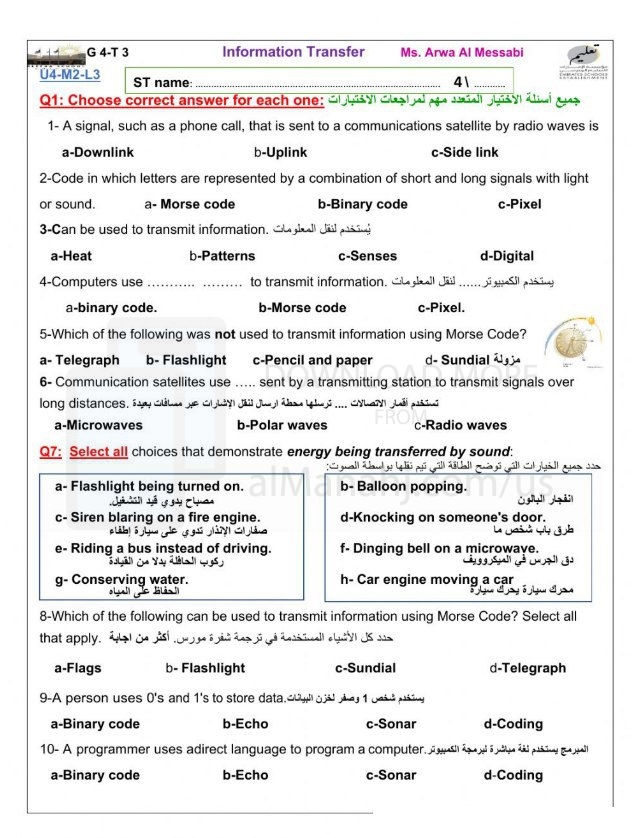| You are here: Almanahj Website ⇒ American curriculum ⇒ 7th Grade ⇒ Information and comm ⇒ Term 1 | ||
|---|---|---|
Worksheet about how communcation deffeloped | ||
|---|---|---|
| Subject: Information and comm | ||
| 7th Grade | ||
| Term 1 | ||
| Year: 2023/2024 | ||
| Number of pages: 8 | ||
| Size: 689.3KB | ||
| Number of clicks: 85 | ||
| Publish date:November 17, 2023 | ||
| Added by: Eman | ||
| Last download date: 2024-08-29 20:34:52 | ||
| Updated by: Eman9966 on 2023-11-17 16:44:41 | By: theodor Arwa Ahmed | |
| File info: Communication has evolved over millennia, from early forms of nonverbal signaling to the complex and sophisticated systems we use today. This evolution has been driven by a number of factors, including the need to coordinate group activities, the development of language, and the advancement of technology. Early forms of communication The earliest forms of communication were likely nonverbal, such as facial expressions, gestures, and vocalizations. These forms of communication were essential for coordinating group activities, such as hunting and gathering. They were also used to express emotions, convey information, and build social bonds. The development of language The development of language was a major turning point in the evolution of communication. Language allowed humans to share information more efficiently and accurately, and it also enabled them to express abstract concepts and ideas. Language is a complex system of symbols and rules that is used to convey meaning. It is made up of units of sound called phonemes, which are combined to form words. Words are then combined to form sentences, which can be used to express a wide range of ideas. The advancement of technology The advancement of technology has revolutionized communication. New technologies have made it possible to communicate with people over long distances and in real time. These technologies have also made it possible to store and share large amounts of information. Key milestones in the evolution of communication The development of writing: Writing was invented around 3500 BC. It was a major breakthrough in communication because it allowed humans to record information for future reference. The invention of the printing press: The printing press was invented in 1450 AD. It made it possible to produce books and other written materials more quickly and cheaply. This led to a wider dissemination of information and a growth in literacy. The invention of the telegraph: The telegraph was invented in 1833 AD. It made it possible to send messages over long distances in a matter of minutes. The invention of the telephone: The telephone was invented in 1876 AD. It revolutionized communication by making it possible to talk to people in real time over long distances. The invention of the internet: The internet was invented in the 1960s. It has made it possible to communicate with people around the world almost instantaneously. The future of communication The future of communication is likely to be shaped by advances in artificial intelligence (AI). AI is already being used to develop new ways to communicate, such as chatbots and virtual assistants. In the future, AI may be used to develop even more sophisticated communication tools that allow us to interact with the world around us in new and innovative ways. Conclusion The evolution of communication has been a long and complex process. It has been driven by a number of factors, including the need to coordinate group activities, the development of language, and the advancement of technology. Communication is essential for human interaction and cooperation. It allows us to share information, express emotions, and build relationships. As technology continues to advance, we can expect to see even more innovative and sophisticated ways to communicate. | ||
| Downloading link Worksheet about how communcation deffeloped |
|---|
|
1700203437.pdf
The file is being prepared for download
|
| File images |
|---|
 |